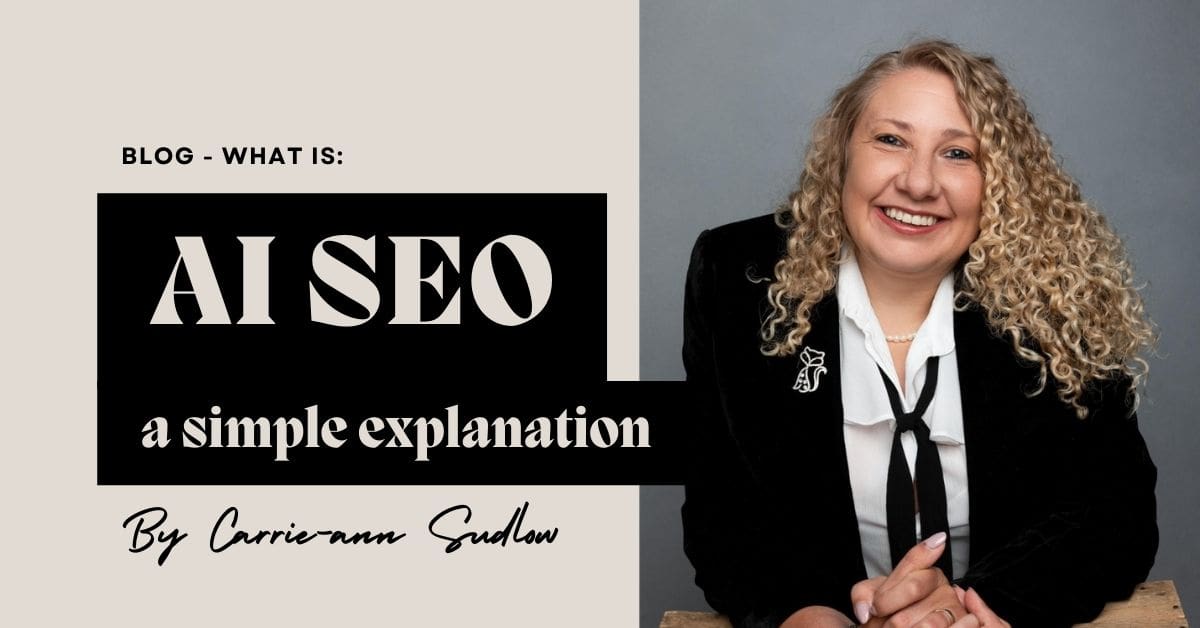
What Is AI SEO?
If you’ve been anywhere near the world of marketing or small business chatter lately, you’ll have heard the phrase AI SEO. It’s thrown around like confetti, but what does it actually mean?
When people say AI SEO, they’re usually talking about one of two things. Either:
Using AI-powered tools to optimise your website for search engines
Optimising your content so it actually shows up in AI-driven search results (think Google AI Overviews, ChatGPT style answers, or Perplexity summaries)
AI SEO Meaning 1: Using AI Tools to Optimise Your Site
The first flavour of AI SEO is all about tools. These clever platforms promise to do the heavy lifting, spotting keyword gaps, analysing your competitors, suggesting blog ideas, and even spitting out draft content.
Popular names include SurferSEO, Jasper, Semrush (with its newer AI features), and a whole raft of shiny new “AI copywriters.” The pitch is seductive: feed in a topic, get an optimised page in seconds. Sounds great, right?
Well… sort of.
The Pros
Speed: AI tools can crunch mountains of data in seconds. Instead of spending hours trawling keyword lists, you’ll get suggestions on what’s worth writing about.
Structure: They’re brilliant at reminding you to include headings, FAQs, and semantically-related keywords you might otherwise miss.
Scale: If you’ve got a big site and need content fast, AI tools can help you cover ground quickly.
The Cons
It’s still generic: Left unchecked, AI-generated text is bland and robotic. Nobody wants to read a blog that sounds like a Siri monologue.
Context blind: Tools can’t always tell if something makes sense for your business. They’ll happily suggest you write about “best SEO agencies in New York” even if you’re a plumber in Manchester.
Over-optimisation risk: Stuffing in keywords because “the tool said so” can backfire. Google’s smart enough to see through it.
So yes, AI SEO tools are useful. But they’re just that: tools. They’re like measuring cups in baking. Handy, accurate, but they don’t bake the cake for you.
AI SEO Meaning 2: Optimising for AI Search Results
Here’s where things get juicy. The second meaning of AI SEO is about making sure your content actually appears inside AI-generated answers.
Search is changing. Once upon a time, you typed something into Google, got a list of blue links, and picked one. Now, Google’s AI Overview often just… gives you the answer. No clicks needed. ChatGPT, Perplexity, and other AI systems do the same.
That’s great for users. But for businesses? It’s a nightmare if you’re not the one being quoted.
So, how do you get your business to be part of those answers?
Focus on Search Intent
AI-driven search isn’t interested in waffle. It’s designed to solve problems quickly. If someone searches “how to fix a leaking tap,” Google AI Overview doesn’t want a 2,000-word history of plumbing. It wants a straight, useful answer.
That means your content needs to match intent. Be crystal clear about what your page covers, who it’s for, and what the outcome is.
Structure is Everything
Make it easy for AI to read your content:
Use proper headings (H2s, H3s)
Answer FAQs directly
Keep sentences clear and punchy
Avoid burying the answer ten paragraphs in
If AI can scan your page and instantly find a neat, transparent explanation, you’ve got a fighting chance of being featured.
Be Transparent and Authoritative
AI systems are trained to trust content that looks reliable. That means:
Add author bios (real humans, not “Admin”)
Include sources or references where relevant
State clearly who the content is for (e.g. small business owners, DIYers, parents, etc.)
The more your content looks like it’s been written by a knowledgeable, trustworthy human, the better.
Why You Need Both Approaches
It’s not enough to just use AI tools, and it’s not enough to just hope you magically show up in AI answers.
You need both sides of AI SEO working together.
Think of it like this:
AI tools help you spot opportunities, speed up the grunt work, and make sure you’re not missing keywords.
AI search optimisation ensures the content you create actually gets surfaced in front of real people when AI systems deliver answers.
One without the other is like buying fancy running shoes and never leaving the sofa. Looks good, achieves nothing.
Practical Steps for Small Businesses
Here’s how you can dip your toe into AI SEO without drowning in tech jargon:
Use tools wisely. Let AI suggest ideas and structure, but always edit with your human voice.
Write for intent. Before hitting publish, ask: What question does this answer, and who needs it?
Keep it transparent. Don’t hide the answer or dance around it, give it up front.
Make it scannable. Headings, short paragraphs, bullet points, AI loves structure.
Don’t neglect the basics. Good old-fashioned SEO still matters: page speed, meta descriptions, and mobile friendliness.
The Bottom Line
AI SEO isn’t some mysterious dark art. It’s simply the next stage of search. One side is about using smart tools to do better SEO. The other is about making sure your content is good enough (and clear enough) to actually be pulled into AI-driven answers.
Ignore it, and you risk vanishing from search altogether. Embrace it, and you’ll be ahead of the pack while others are still moaning about “how unfair Google is.”
So, if you’re ready to stop panicking every time Google sneezes and actually want to get seen by humans (via robots), now’s the time to get started. And if you want a straight-talking SEO partner who’ll cut through the jargon and get you results, well, you know where we are.